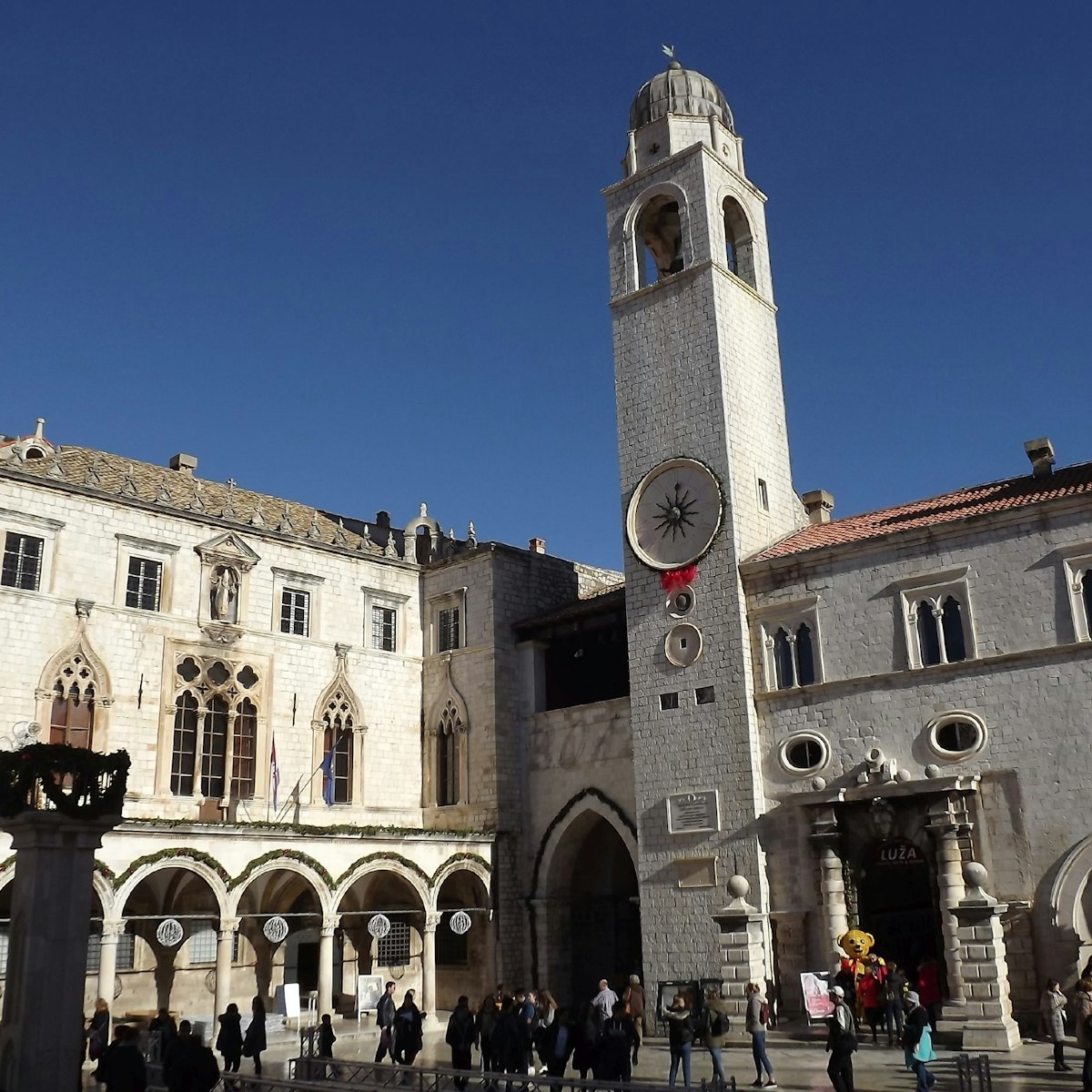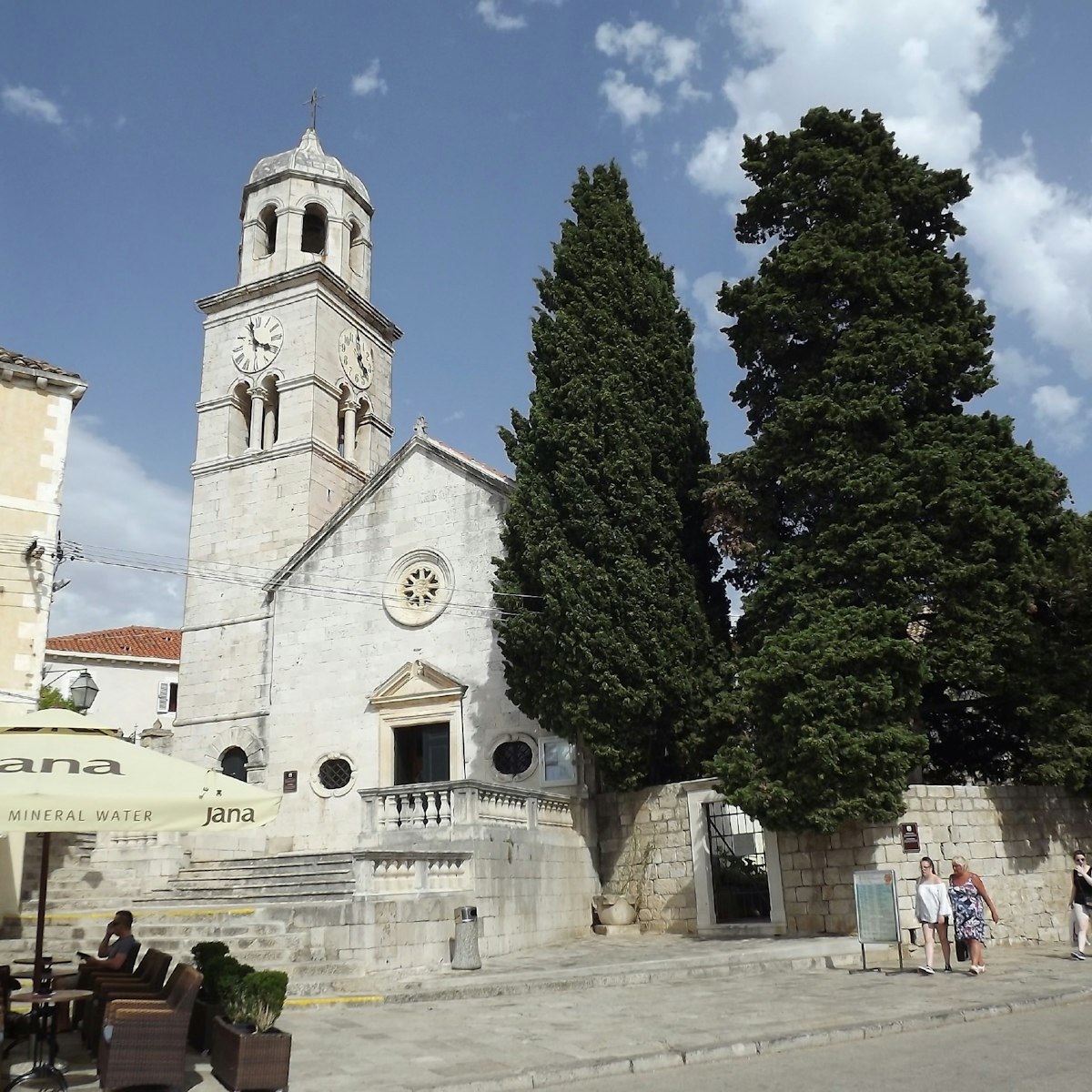
Dubrovnik
With a religious practice that can be traced back to the 14th century, this is said to be the second-oldest still-functioning synagogue in Europe and the…

Dubrovnik
With a religious practice that can be traced back to the 14th century, this is said to be the second-oldest still-functioning synagogue in Europe and the…

National Museum of Contemporary Art
Bucharest
The Palace of Parliament houses a superb art gallery, which displays temporary, ever-changing exhibitions of eclectic installations and video art. Check…

Sofia
This remarkable, partly covered excavation site, situated just above the Serdika metro station, displays the remains of the Roman city, Serdica, that once…

St Petersburg
Administered by the Russian Museum, these 8.7-hectare gardens are lovely and offer an impressive perspective of Mikhailovsky Castle. They are famous for…

Museum of Science and Technology
Belgrade
The name may sound dry, but this is a marvellous place for visitors – especially families – to spend a couple of hours. This wonderful museum showcases…

Bucharest
Just to the north of the National Art Museum is the Athénée Palace, so evocatively captured in its postrevolutionary, prostitute-teeming state by Robert…

Western Estonia & the Islands
The great hulking shell of this burnt-out, 14th-century Cistercian monastery practically insists on exploration. Stairs lead up into the ruins, where you…

Kyiv
This museum in the Upper Lavra, behind the Dormition Cathedral, has an astounding collection of precious stones and metal found or made in Ukraine. The…

Bucharest
The Jewish History Museum is housed in a colourful synagogue that dates from 1836 (rebuilt in 1910). Exhibits (in English and Romanian) outline Jewish…

Bernardine Church and Monastery
Lviv
Lviv's most stunning baroque interior belongs to the 17th-century now Greek Catholic Church of St Andrew, part of the Bernadine Monastery. Populated with…

Museum of Ethnography, Arts & Crafts
Lviv
This underfunded, chaotically curated museum has a few interesting pieces of furniture, Czech glass, art nouveau posters (Mucha, Lautrec) and various 19th…

Dubrovnik
Dedicated to the city's patron saint, this exceptionally beautiful church was built in 1715 in the ornate baroque style. The interior is notable for its…

Split
Sculpted by Ivan Meštrović, this gargantuan statue is one of the defining images of Split. Its subject, a 10th-century Croatian bishop, fought for the…

Moscow
A statue of the founder of Moscow, Yury Dolgoruky, presides over this prominent square near the bottom of Tverskaya ul. So does Mayor Sergei Sobyanin, as…

Kyiv
Once a storage for gunpowder and harnesses, these days it is a playground for visionary curators – each exhibition becomes an event of national importance…

Manege Central Exhibition Hall
St Petersburg
Formerly the Horse Guards’ Riding School, this large white neoclassical building was constructed between 1804 and 1807 from a design by Giacomo Quarenghi…

Lviv
The tall copper-domed church just west of the Armenian Cathedral is the late-17th-century, newly renovated Transfiguration Church, the first church in the…

Belgrade
Climb the 18th-century, 27.5m-tall tower’s narrow stairs to check out the inner workings of this landmark clock and snap some panoramic shots of…

Sofia
This beautiful church with glittering mosaic exterior and golden domes was completed in 1914 for Sofia’s Russian community, and named in honour of St…

Vis Island
Located on the island of Biševo, off Vis' southwestern tip, this coastal cave is one of the region's most famous natural sights. It's at its best between…

Novi Sad
The 1909 Synagogue of Novi Sad, designed by Hungarian architect Lipót Baumhorn, was built as the fifth one on the same location to serve the city’s once…

Kyiv
Located at the far side of Zhulyany airfield, this open-air museum displays dozens of Soviet aircraft designed to carry people or tanks, land on ice or…

Dubrovnik
Marking the eastern end of the old town’s main drag, this slender dome-capped tower has a large curvy clock face known as ‘the octopus’ and a two-tonne…

Kyiv National Museum of Russian Art
Kyiv
With 2000 paintings, only a fraction of which are on display at any one time, this museum, set in an impressive tsar-era mansion, has the largest…

St Petersburg
The two Rostral Columns, archetypal St Petersburg landmarks, are studded with ships’ prows and four seated sculptures representing four of Russia’s great…

Braşov
This wide square, lined with cafes, was once the heart of medieval Braşov. In the centre stands the 1420 Council House (Casa Sfatului), topped by the…

Vilnius
Crosses were first erected in the 17th century, in memory of a group of monks martyred by pagans three centuries earlier. The current crosses replace…

Zagorje
As you approach the pentagonal hilltop castle of Veliki Tabor, 57km northwest of Zagreb, what unfolds is a pleasing panorama of hills, cornfields,…

Belgrade
This splendid brick tower (1896) has been renovated to house a free gallery, which hosts regular exhibitions. The views from the top, especially at sunset…

Estonia
Built between 1885 and 1895, the five green onion-domed towers of Pühtitsa Convent, crowning Kuremäe (Crane Mountain), are visible for miles. Murals by…

Cavtat
Peek inside this 15th-century church to view its impressive wooden altars and the accomplished Bukovac paintings of the four evangelists on either side of…

St Petersburg
The last great church to have been built in St Petersburg before the revolution, this neo-Byzantine beauty dates from 1907 and creates one of the most…

Sighişoara
Vlad Ţepeş (aka Dracula) was reputedly born in this house in 1431 and lived here until the age of four. It's now a decent restaurant, but for a small…

Podgorica
The Montenegro Contemporary Art Centre stages high-profile exhibitions in this pale-pink 19th-century palace. The surrounding park is peppered with…

Lviv
The late-16th-century Golden Rose Synagogue stood at the heart of the inner district before the Nazis blew it up in 1943. A piece of wasteland for decades…

Krk Island
More than just a village church, little St Lucy's was the site of one of the most important cultural discoveries in Croatia – the 11th-century Baška…

St Petersburg
The Yelagin Palace was built for his mother by Tsar Alexander I, who had architect Carlo Rossi landscape the entire island while he was at it. The palace,…

Western Estonia & the Islands
Occupying the keep of Kuressaare Castle since the late 19th century, this museum is devoted to Saaremaa’s nature and history. A large part of the fun is…

St Petersburg
Also known as the House of Matyushin, this small museum occupies a charming grey-painted wooden cottage dating from the mid-19th century that was once the…

St Petersburg
The Style Moderne gem Leuchtenberg House is so called because it once belonged to the Duke of Leuchtenberg, great-grandson of Tsar Nicholas I. Cross the…
{
"position": "superzone"
}